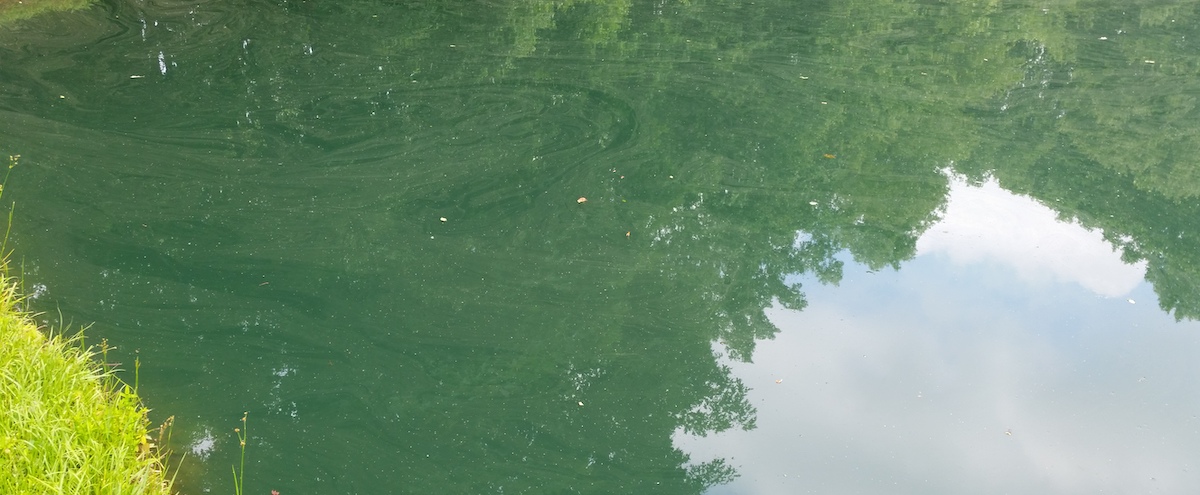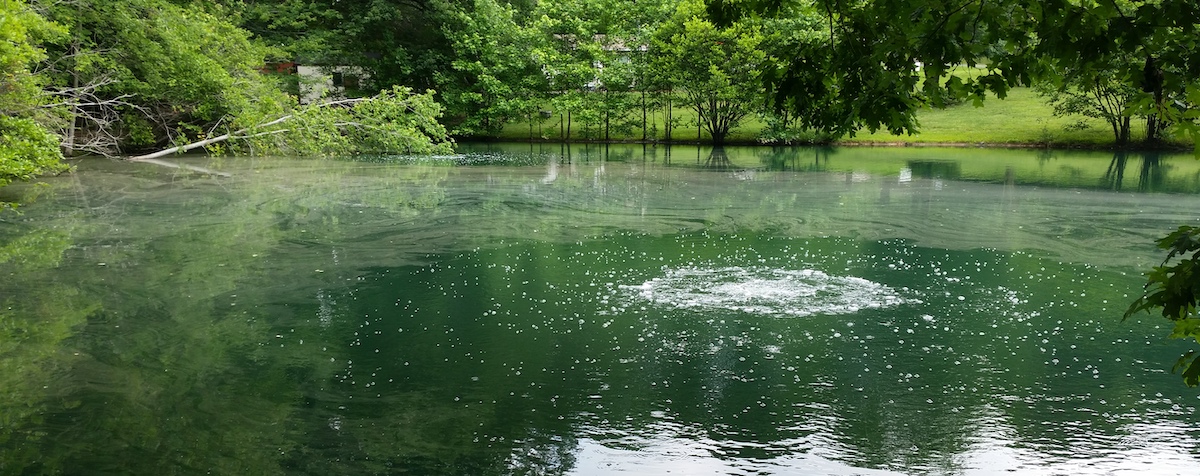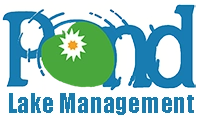Biofilm vs Algae – What is the difference?
Biofilm vs. Algae – What is the difference? – Table of Contents
In the summertime, ponds and lakes may experience an increase in algae and vegetation on the water’s surface. Algae and growing plants can be managed through algaecides, fertilizers, and pH treatments. However, there is one phenomenon that is a bit different: Biofilms.
Biofilm is not a single organism but is a collection of dead plant matter and dead bacteria that gather on the water’s surface. This dead matter would usually be decomposed underwater but, because of an issue in the pond or lake, it cannot decompose properly and floats to the surface as a whitish/Greyish, reflective film. Some pond and lake owners describe the film as resembling an oil spill because it creates a colorful shimmer on the surface. They are also commonly confused for an algal bloom because the dead organic matter can look scummy and green on top of stagnant water. Unlike algae, which grows outward from a central location, biofilms can be blown across the water’s surface by the wind and often concentrate near the banks.
Biofilms accumulate when dead and dying organisms are not decomposing properly and the pond’s life cycles are disrupted. Biofilms are not only a problem on their own, but are also a result of larger issues, such as stagnant water, faulty filtration, and bacterial imbalance. If the water is stagnant or if your area has not had any recent rainfall the water in your pond or lake will not have the movement it needs to circulate oxygen. This can lead to a change in the water’s pH, which threatens the environment many bacteria need to thrive.
Managing an aquatic ecosystem is all about the balance between plants, animals, and microscopic organisms such as bacteria and fungi. Both algal blooms and biofilms form when
If you notice biofilm accumulating on your pond or lake, you should seek help from a trusted ecosystem management team. Biofilms are slimy and difficult to remove without proper treatments in place. Left unchecked, they can clog filtration systems and – similarly to algal blooms – block sunlight that aquatic plants, animals, and bacteria need to survive beneath the surface.
It is important to know whether the issue you see in your pond or lake is an algal bloom, oil spill, or biofilm before beginning to address it because these three issues have very different solutions.
Because biofilms are not alive, chemical treatments meant to kill growing organisms such as algae do not prevent or destroy them. Discuss any observed biofilm seen on your property during your bi-monthly maintenance appointments or contact Pond Lake Management to schedule a new assessment and treatment plan based on your concerns.

Cleaning up a biofilm, and preventing the appearance of more biofilm in the future, requires immediate removal in the short term and a long- term plan to support a healthy cycle of life and decomposition within the water. When you report a biofilm on the surface of your pond or lake, your treatment team will likely begin by manually removing as much sludge and scum as possible from the water’s surface with a net or vacuum. Then, any remaining biofilm may be treated with pH-altering additives for the water, new bacteria to aid in decomposition, and the installation of long-term aerators.
Filtration systems, fountains, and surface aerators can help a stagnant, unbalanced body of water return to its former state. Fountains are primarily ornamental but can move water around the surface of a pond and bring some movement to otherwise stagnant or slow-moving ponds. Surface aerators circulate water more forcefully than fountains and can introduce consistent oxygen into the water. Submerged diffused aerators can be placed on the bottom of the pond or lake to circulate the water, muck, and dead matter gathering there. If your pond or lake’s biofilm has been caused by stagnant water and a lack of oxygen reaching bacteria far below the surface, then an aerator may be the equipment you need.
See Pond Lake Management’s store and Aeration page for more details, and call to find out which systems may be right for you.
More slimy but important information about Algae and Biofilm:
Pond Algae – The Good, the Bad, and the Ugly – UGA Extension office
Contributing Author: Meg Byrum





